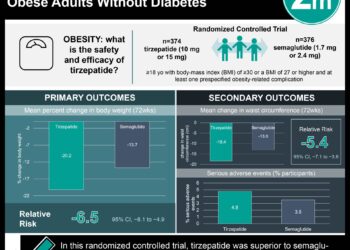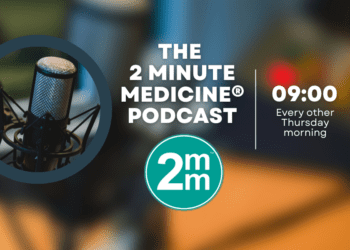High BMI linked to reduced risk of endometriosis
Image: PD
1. Body mass index (BMI) at age 18 and current BMI were inversely related with endometriosis.
2. Among infertile women, magnitude of weight change since early adulthood and rate of endometriosis were inversely related.
Evidence Rating Level: 2 (Excellent)
Study Rundown: This study found that BMI at age 18 and current BMI were inversely related with risk of endometriosis. Women who were overweight or obese and infertile women who had experienced increases in BMI since age 18 were less likely to be diagnosed with endometriosis. While prior studies have shown an inverse relationship between weight and risk of endometriosis, this study is the first to assess BMI in early adulthood and suggests that BMI at age 18 precedes the diagnosis of endometriosis and may play a role in its development.
Strengths of this study include a prospective design, large sample size and extensive follow-up period. Limitations include the use of self-reported height and weight data and limiting measured outcomes to the diagnosis of endometriosis. Future studies might assess the relationship of BMI and weight to stages of endometriosis and more long-term sequelae related to the condition.
Click to read the study in Human Reproduction
Relevant Reading: Epidemiology of endometriosis – an assessment of risk factors
Study Author, Dr. Divya Shah, M.D., talks to 2 Minute Medicine: University of Iowa, Clinical Assistant Professor, Department of Obstetrics & Gynecology
“A key finding of this study is that high body mass index (BMI), both currently and at age 18, is associated with a significantly lower risk of developing endometriosis. The association was strongest in the subgroup of infertile women. This information may be useful for clinicians to integrate into their diagnostic workup for endometriosis. Despite the strength of evidence underlying this association, however, it is important to note that inferences regarding causation cannot be made based on this data. Moreover, the study does not suggest that obese women are, in some way, healthier than lean women and that is the reason for their lower risk of endometriosis. It is more likely that the prevalence of conditions like polycystic ovary syndrome in obese infertile women may contribute to the reduced risk of endometriosis in this population. Future work will need to focus on elucidating the underlying biologic mechanisms that contribute to this disease process.”
In-Depth [prospective cohort study]: This study evaluated the relationship between BMI, body size and endometriosis. Data was drawn from 116,430 female nurses from September 1989 to June 2011 as part of the Nurses’ Health Study II. BMI was calculated using self-reported height and weight, and participants were categorized as lower (18.5-22.4 kg/m2) or upper (22.5-24.9 kg/m2); the low-normal group was used as the referent group in analysis. Endometriosis was self-reported and confirmed with operative reports. Data on demographics, substance use, infertility, oral contraception use and menstrual history were also collected.
Current BMI demonstrated an inverse linear relationship (p<0.0001) for infertile women, and BMI at age 18 showed a similar trend for all women (p<0.0001). Women who were morbidly obese (BMI > 40 kg/m2) were less likely to develop endometriosis (RR 0.61, CI 0.50-0.75). Women who had BMIs of 25-29.9 and 30-34.9 kg/m2 at age 18 were also less likely to be diagnosed with endometriosis. Among women with infertility, there was an inverse linear relationship between change in BMI and endometriosis (RR 0.66, CI 0.53-0.82).
By Denise Pong and Leah Hawkins
More from this author: Obtaining consent for c-section during labor may be suboptimal, Gestational weight loss may improve outcomes for obese women, Chromosomal analysis not cost effective in evaluation of recurrent miscarriage
© 2013 2minutemedicine.com. All rights reserved. No works may be reproduced without written consent from 2minutemedicine.com. Disclaimer: We present factual information directly from peer reviewed medical journals. No post should be construed as medical advice and is not intended as such by the authors or by 2minutemedicine.com. PLEASE SEE A HEALTHCARE PROVIDER IN YOUR AREA IF YOU SEEK MEDICAL ADVICE OF ANY SORT. Content is produced in accordance with fair use copyrights solely and strictly for the purpose of teaching, news and criticism. No benefit, monetary or otherwise, is realized by any participants or the owner of this domain.







